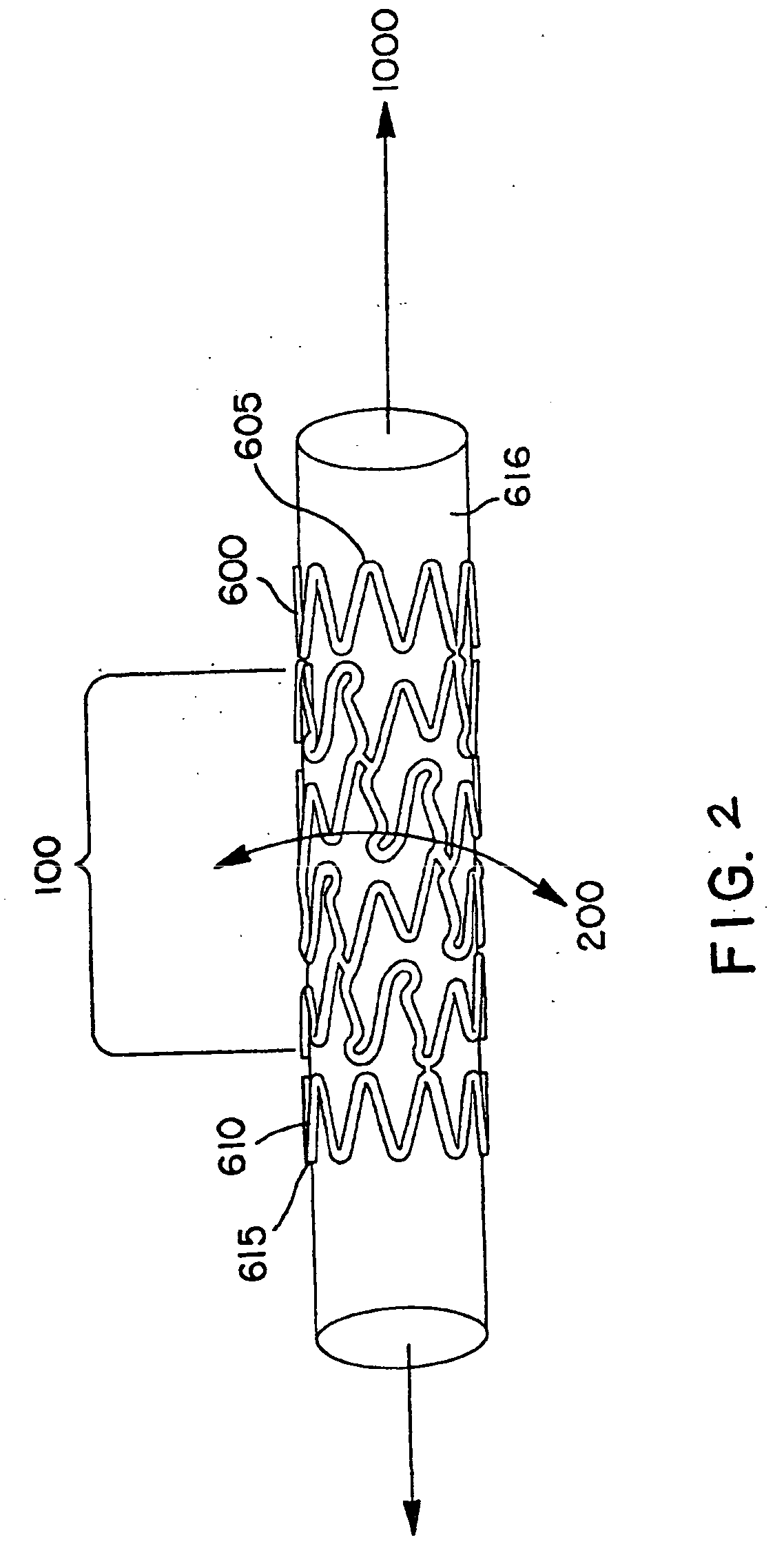Use of endothelin antagonists to prevent restenosis
a technology of endothelin and antagonist, which is applied in the field of intracorporeal medical devices, can solve the problems of ischemic damage to the tissues supplied by the artery, frequent occurrence of restenosis, and continue to suffer significant disadvantages, so as to inhibit the occurrence of restenosis and hyperplasia, increase efficiency and/or efficacy, and inhibit the effect of restenosis
- Summary
- Abstract
- Description
- Claims
- Application Information
AI Technical Summary
Benefits of technology
Problems solved by technology
Method used
Image
Examples
example 1
Endothelin (A) Receptor Antagonist Loaded onto a Vascular Stent
[0102] A stainless steel stent is sprayed with a solution of Ambrisentan in a 100% ethanol or methanol solvent. The stent is dried and the ethanol is evaporated leaving the Ambrisentan on a stent surface. A 75:25 PLLA / PCL copolymer (sold commercially by Polysciences) is prepared in 1,4 dioxane (sold commercially by Aldrich Chemicals). The Ambrisentan loaded stent is loaded on a mandrel rotating at 200 rpm and a spray gun (sold commercially by Binks Manufacturing) dispenses the copolymer solution in a fine spray on to the Ambrisentan-coated stent as it rotates for a 10-30 second period. The stent is then placed in an oven at 25-35° C. up to 24 hours to complete evaporation of the solvent.
example 2
Endothelin (A) Receptor Antagonist-Containing Matrix Loaded onto a Vascular Stent
[0103] Nitinol™ stents are cleaned by placement in an ultrasonic bath of isopropyl alcohol solution for 10 minutes. The stents are dried and plasma cleaned in a plasma chamber. An ethylene vinyl alcohol copolymer (EVOH) solution is made with EVOR, DMSO and Ambrisentan. The mixture is placed in a warm water shaker bath at 60° C. for 24 hours. The solution is cooled and vortexed. The cleaned stents are dipped in the EVOH solution and then passed over a hot plate, for about 3-5 seconds, with a temperature setting of about 60° C. The coated stents are heated for 6 hours in an air box and then placed in an oven at 60° C. under vacuum condition for 24 hours.
example 3
Human Saphenous Vein Model of Vein Graft Intimal Hyperplasia
[0104] Culture method. The use of human saphenous vein model of vein graft intimal hyperplasia, in which paired segments of human long saphenous vein (LSV) are cultured with and without an endothelin (A) receptor antagonist, is described by Porter, et al. (J. Vasc. Surg. (1998), 28:695-701) as follows.
[0105] Segments of the LSV are obtained from patients who have undergone arterial bypass grafting the segments are transported to the laboratory in a calcium-free physiologic saline solution and prepared for culture. Briefly, the excess fat and the adventitial tissue are dissected from the vessels, which are then opened longitudinally and cut into 0.5-cm lengths. The vessels are pinned, lumenal surface upmost, with fine minuten pins onto a 500-μm mesh resting on a layer of preformed Sylgard resin (Dow Coming, Seneffe, Belgium) in the bottom of a 60×20-mm glass petri dish. Cultures are maintained in RPMI 1640 medium (Northumb...
PUM
| Property | Measurement | Unit |
|---|---|---|
| Biocompatibility | aaaaa | aaaaa |
| Cell proliferation rate | aaaaa | aaaaa |
| Bioabsorbable | aaaaa | aaaaa |
Abstract
Description
Claims
Application Information
 Login to View More
Login to View More - R&D
- Intellectual Property
- Life Sciences
- Materials
- Tech Scout
- Unparalleled Data Quality
- Higher Quality Content
- 60% Fewer Hallucinations
Browse by: Latest US Patents, China's latest patents, Technical Efficacy Thesaurus, Application Domain, Technology Topic, Popular Technical Reports.
© 2025 PatSnap. All rights reserved.Legal|Privacy policy|Modern Slavery Act Transparency Statement|Sitemap|About US| Contact US: help@patsnap.com


